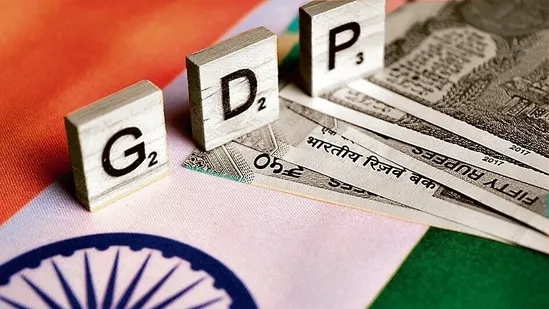On January 31, 2025, The Union Finance Minister Nirmala Sitharaman presented the Economic Survey for 2024-25 in Parliament, offering a detailed look at India’s economic outlook. The report predicts that India’s GDP growth for FY26 will be in the range of 6.3% to 6.8%, despite ongoing global economic challenges. The survey also highlights a stable inflation outlook, steady consumption patterns, and a hopeful rise in rural demand over the coming months.
The Economic Survey, which is compiled by the Department of Economic Affairs and led by Chief Economic Advisor (CEA) V. Anantha Nageswaran, evaluates India’s economic performance and forecasts future trends. This report follows the earlier survey presented in July 2024, just after the General Elections.
Economic Survey 2024-25: key Highlights
1. Indian Economy to Stay Stable in 2025
The survey notes that India’s real GDP growth is projected at 6.4% for FY25, which is close to the average growth rate of the past decade. Looking ahead to FY26, the economy is expected to grow between 6.3% and 6.8%. This positive forecast is based on India’s consistent economic policies, which have helped the country remain resilient despite global uncertainties.
2. India’s Key Sectors Driving Economic Growth
The Economic survey points out that all major sectors in India are contributing positively to economic growth. The agriculture sector is performing exceptionally well, surpassing its general trend and operating at levels above its usual level. The industrial sector has resumed pre-pandemic growth levels, while the services sector is resuming its long-term growth trend, laying a solid foundation for the economy.
3. Economic growth: Inflation Set to Reach 4% by FY26
Retail inflation, which was a concern in previous years, has decreased from 5.4% in FY24 to 4.9% between April and December 2024. This reduction is attributed to various government measures and effective monetary policies. Although there were challenges like weather-related disruptions and rising food prices, experts, including the Reserve Bank of India (RBI) and the International Monetary Fund (IMF), expect inflation to reach the 4% target by FY26.
4. India’s Financial Sector Stability and Growth
India’s financial sector is showing strong signs of stability, according to the survey. The ratio of non-performing assets (NPAs) in commercial banks has fallen steadily from 5.0% in FY18 to 2.6% by September 2024. In addition, the banking sector’s credit growth is now more sustainable. The country’s insurance market is also on the rise, with premiums growing by 7.7%, and pension schemes have seen strong growth, providing further support to the financial system.
5. India’s FDI Up 17.9% in FY25, Exports Grow
The survey reports a strong rebound in foreign direct investment (FDI) into India, which grew by 17.9% in FY25, reaching $55.6 billion. The country’s export performance has been steady, with both merchandise and services exports increasing by 6% year-on-year. India’s external debt remains stable, and its debt-to-GDP ratio is at a manageable 19.4%, indicating the country’s ability to meet international financial obligations.
6. Economic Survey: Deregulation Key to India’s Growth
The Economic Survey stresses the need for deregulation to foster continued growth. It suggests that simplifying rules and improving the ease of doing business will be crucial for India’s economic future.
As the global economy faces shifts such as geo-economic fragmentation and increased competition from countries like China, deregulation and economic freedom are seen as necessary for India to strengthen its domestic growth engines.
7. Infrastructure Investment Key to India’s Growth: Economic Survey 2025
A major focus of the survey is the importance of continued investment in infrastructure to support India’s future growth.
The government has significantly increased capital expenditure on infrastructure, with a growth rate of 38.8% from FY20 to FY24.
This trend is expected to continue into FY25, further boosting economic activity, creating jobs, and supporting overall development.
8. India’s Industrial Sector Sees 6.2% Growth in FY25
India’s industrial sector has shown solid growth, expanding by 6.2% in FY25. This growth is largely driven by increases in electricity generation and construction. Other areas of industrial performance include a 4.6% growth in steel production and a 12.5% rise in domestic automobile sales in FY24. Additionally, the electronics sector has also seen impressive growth, with a 17.5% annual growth rate in domestic production from FY15 to FY24.
9. Service Sector Contributes 55% to GVA, Key Focus on Skills and Reforms
The service sector remains a critical driver of India’s economy, now contributing over 55% of the country’s gross value added (GVA). To sustain and increase this growth, the survey emphasizes the need for skill development across the workforce and the simplification of regulations at the grassroots level. Investing in human capital and removing bureaucratic hurdles are key to boosting growth in both manufacturing and services.
10. Agriculture Contributes 16% to India’s GDP
Agriculture remains vital to India’s economy, contributing around 16% of the GDP. The survey highlights various government initiatives to support the agriculture sector, such as increasing the Minimum Support Price (MSP) for crops, providing loans through Kisan Credit Cards (KCC), and launching schemes like the Pradhan Mantri Kisan Sampada Yojana (PMKSY) to improve food processing. Programs such as PM-KISAN, which offers direct income support to farmers and PM-KISAN Maandhan Yojana, which provides pension benefits, are also helping improve the financial security of farmers.
Conclusion:
The Economic Survey 2025 offers an optimistic view of India’s economic future, projecting steady growth despite global uncertainties. With strong performance across key sectors, stable inflation, and solid financial health, India is on track for continued expansion.
The focus on infrastructure investment, deregulation, skill development, and support for agriculture is expected to drive the country’s growth over the next several years.
As India aims for a developed economy, these initiatives are seen as crucial in supporting sustainable, inclusive growth in the coming decade.
Also Read: PM Modi: No Foreign Interference Ahead of Budget Session, Focus on Growth and Youth


